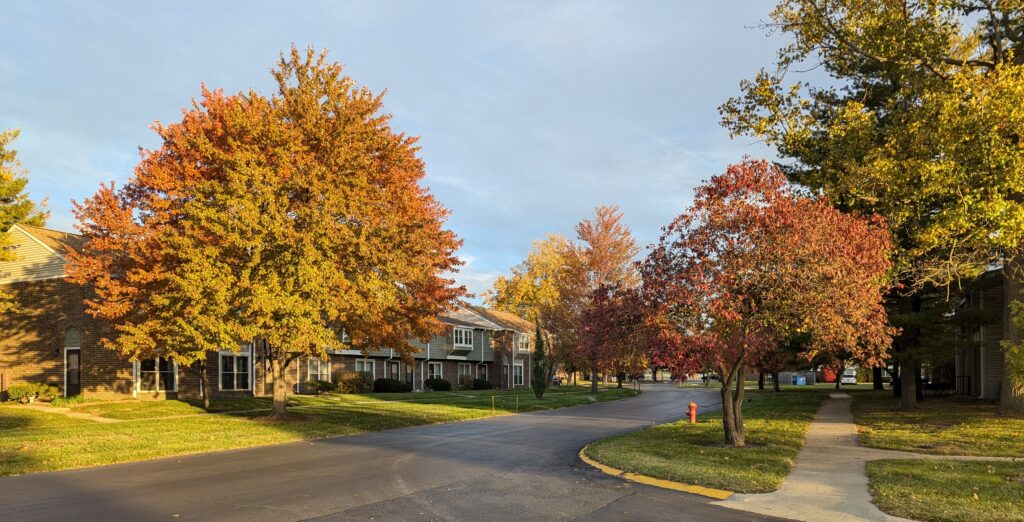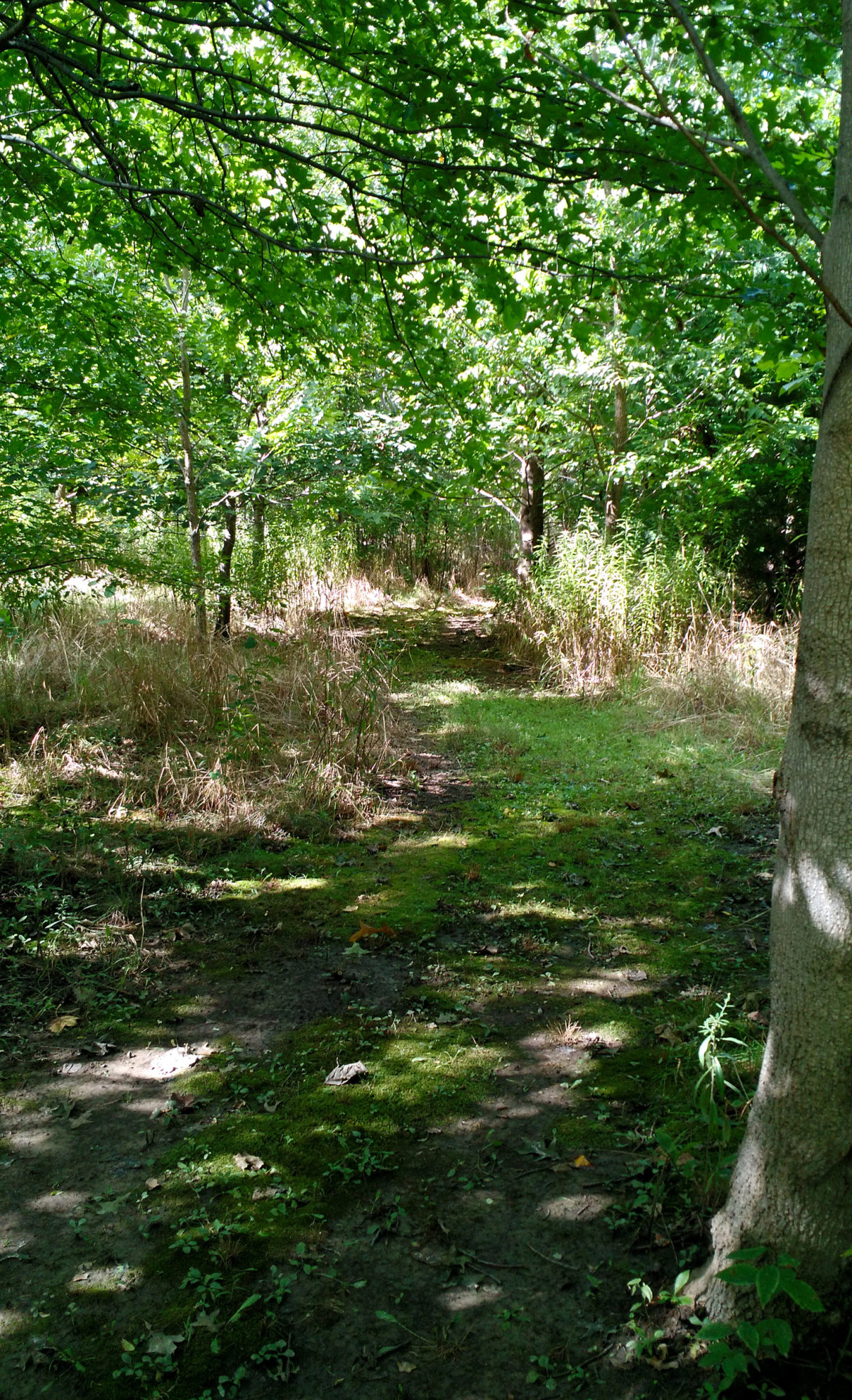In Central Illinois fall colors are often a bit diffuse: the early trees turning brown and losing their leaves while the later trees are still green, with only a few trees showing their full autumn colors.
This year is something of an exception.



For years I was sure that blaze orange would be the most visible color—so sure that I bought all my shirts for bicycling in some approximation of that color. I simply couldn’t imagine that a greenish-yellow color would be more visible, especially against green backgrounds like corn and soybean fields.
Then one day while out riding in one of my orange shirts, I was passed by a pair of cyclists, one wearing just about the same color of blaze orange as I was, and the other wearing high-viz yellow.
They were riding quite a bit faster than I was, so over the course of the next few minutes they dwindled down to two small dots far ahead of me. And then they dwindled into one small dot: the high-viz yellow one. And that high-viz yellow shirt remained visible for a really long time after the orange-shirted guy riding right next to him had vanished in the distance.
After I thought about it, it made sense. Humans evolved as forest-edge creatures. Of course high-viz yellow stands out, even against a hundred different shades of leafy green. Picking critical detail out of dappled shade—where basically everything is a shade of yellow-green—is exactly what the human eye evolved to do.
All my new safety gear is high-viz yellow.